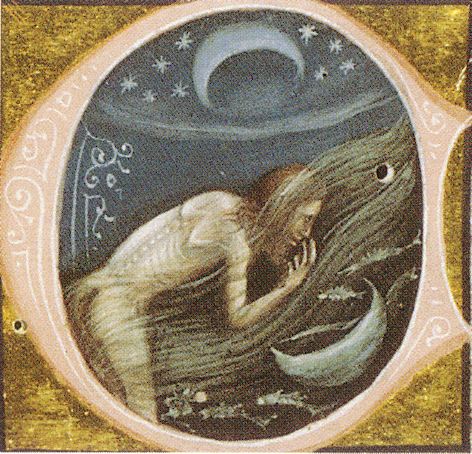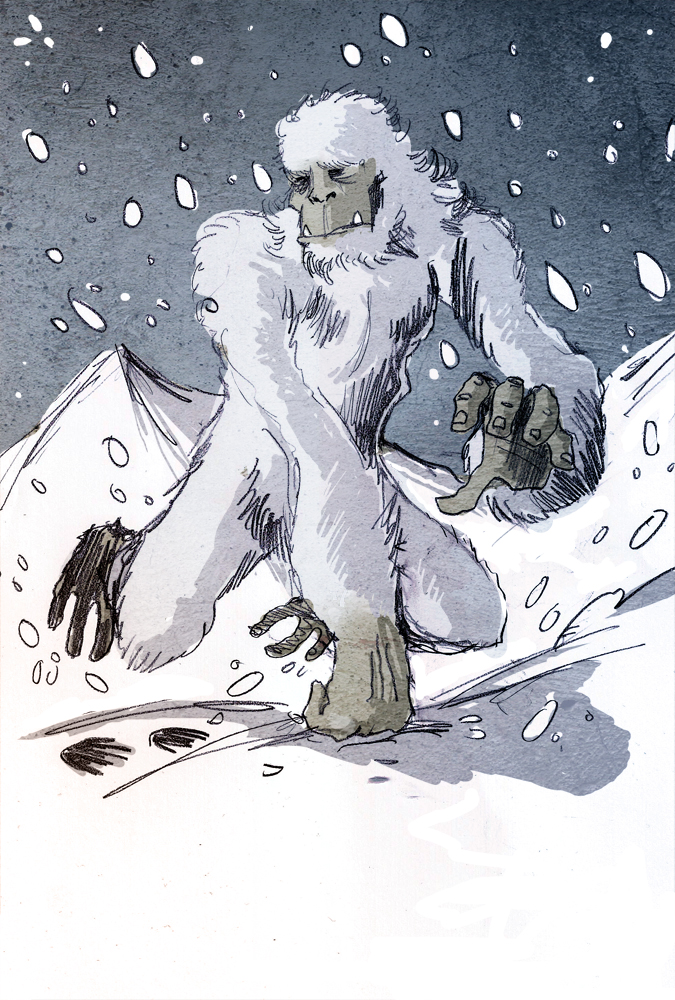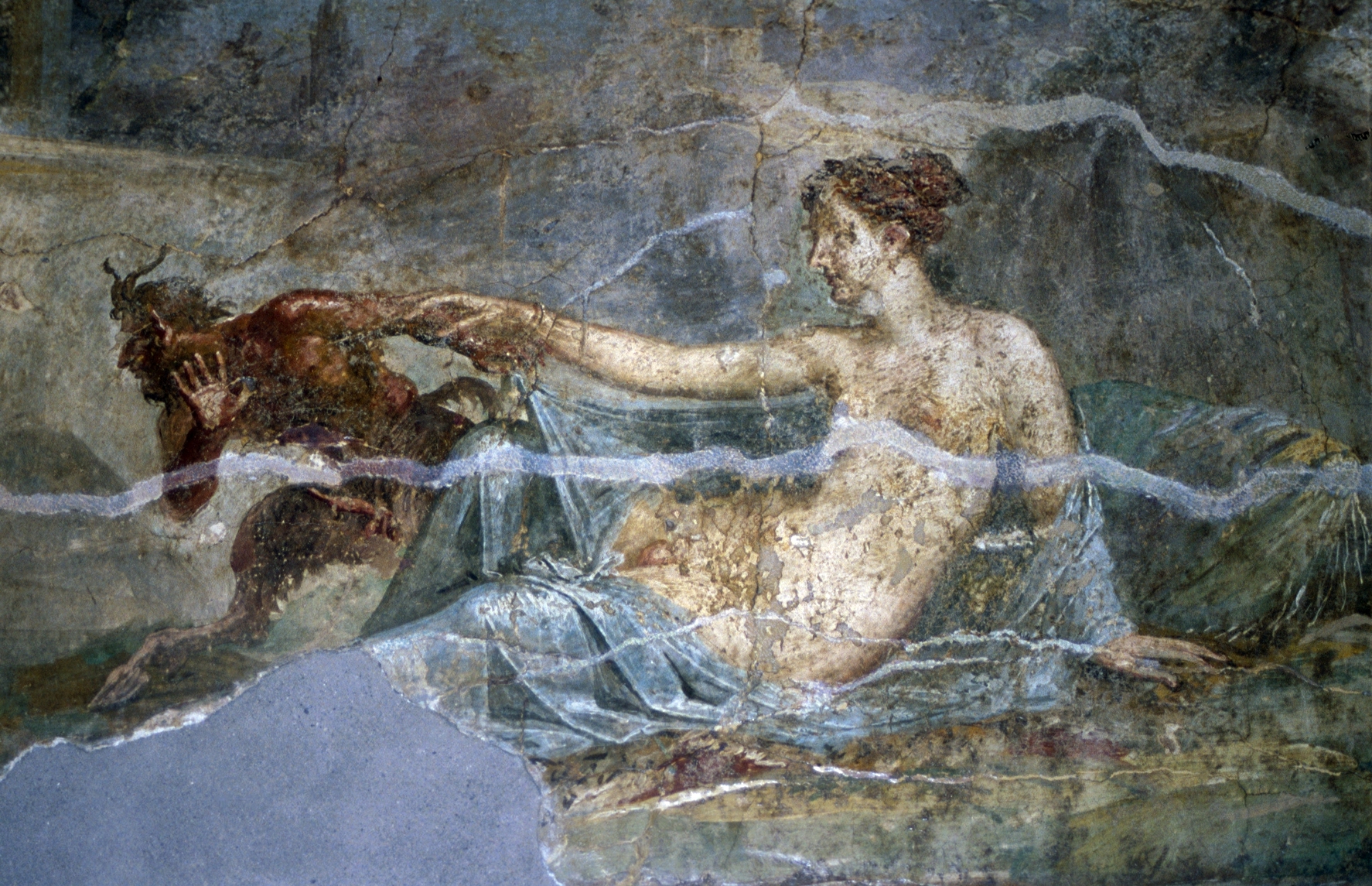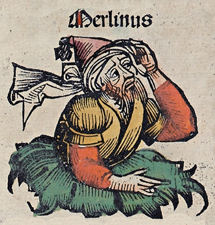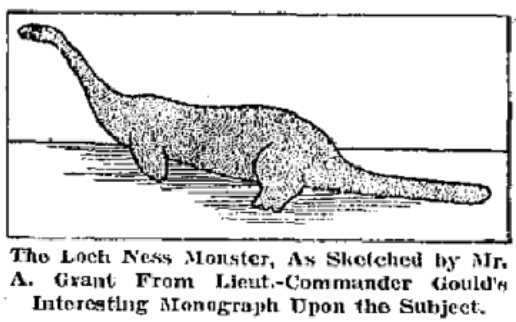|
7 Faces Of Dr. Lao
''7 Faces of Dr. Lao'' is a 1964 American Metrocolor Western fantasy-comedy film directed by George Pal (his final directorial effort) and starring Tony Randall. The film, an adaptation of the 1935 novel ''The Circus of Dr. Lao'' by Charles G. Finney adapted for the screen by Charles Beaumont, details the visit of a magical circus to a small town in the southwestern United States and its effects on the townspeople. Plot Dr. Lao rides a golden donkey (implied to be The Golden Ass of Apuleis) into the small town of Abalone, Arizona and visits Edward Cunningham's newspaper to place a large advertisement for his traveling circus, which will play for two nights only. Though quiet, Abalone is not peaceful. Wealthy rancher Clinton Stark has inside information that a railroad is coming to town and plans to buy the entire town while the land is cheap. Stark arrives at the newspaper offices to confront Cunningham about a recent editorial in opposition to Stark's plan. Lao, waiting to pl ... [...More Info...] [...Related Items...] OR: [Wikipedia] [Google] [Baidu] |
George Pal
George Pal (born György Pál Marczincsak; ; February 1, 1908 – May 2, 1980) was a Hungarian-American animator, film director and producer, principally associated with the fantasy and science-fiction genres. He became an American citizen after emigrating from Europe. He was nominated for Academy Awards (in the category Best Short Subjects, Cartoon) for seven consecutive years (1942–1948) and received an honorary award in 1944. This makes him the second-most nominated Hungarian exile (together with William S. Darling and Ernest Laszlo) after Miklós Rózsa. Early life and career Pal was born in Cegléd, Hungary, the son of György Pál Marczincsak, Sr. and his wife Mária. He graduated from the Hungarian University of Fine Arts in 1928 (aged 20). From 1928 to 1931, he made films for Hunnia Film Studio of Budapest, Hungary. At the age of 23 in 1931, he married Elisabeth "Zsóka" Grandjean, and after moving to Berlin, founded Trickfilm-Studio GmbH Pal und Wittke, with UFA S ... [...More Info...] [...Related Items...] OR: [Wikipedia] [Google] [Baidu] |
The Golden Ass
The ''Metamorphoses'' of Apuleius, which Augustine of Hippo referred to as ''The Golden Ass'' (''Asinus aureus''), is the only ancient Roman novel in Latin to survive in its entirety. The protagonist of the novel is Lucius. At the end of the novel, he is revealed to be from Madaurus, the hometown of Apuleius himself. The plot revolves around the protagonist's curiosity (''curiositas'') and insatiable desire to see and practice magic. While trying to perform a spell to transform into a bird, he is accidentally transformed into an ass. This leads to a long journey, literal and metaphorical, filled with inset tales. He finally finds salvation through the intervention of the goddess Isis, whose cult he joins. Origin The date of composition of the ''Metamorphoses'' is uncertain. It has variously been considered by scholars as a youthful work preceding Apuleius' ''Apology'' of 158–159, or as the climax of his literary career, and perhaps as late as the 170s or 180s. Apuleius adap ... [...More Info...] [...Related Items...] OR: [Wikipedia] [Google] [Baidu] |
Noah Beery, Jr
Noah Lindsey Beery (August 10, 1913 – November 1, 1994) was an American actor often specializing in warm, friendly character roles similar to many portrayed by his Oscar-winning uncle, Wallace Beery. Unlike his more famous uncle, however, Beery Jr. seldom broke away from playing supporting roles. Active as an actor in films or television for well over half a century, he was best known for playing James Garner's character's father, Joseph "Rocky" Rockford, in the NBC television series ''The Rockford Files'' (1974–1980). His father, Noah Nicholas Beery (known professionally as Noah Beery or Noah Beery Sr.) enjoyed a similarly lengthy film career as an extremely prominent supporting actor in major films, although the elder Beery was also frequently a leading man during the silent film era. Life and career Beery was born in New York City, New York, where his father was working as a stage actor. He was given his nickname "Pidge" by George M. Cohan's sister Josie. The fa ... [...More Info...] [...Related Items...] OR: [Wikipedia] [Google] [Baidu] |
John Ericson
John Ericson (sometimes spelled Erickson; September 25, 1926 – May 3, 2020) was a German-American film and television actor known primarily for his co-star role with actress Anne Francis on the ABC television series ''Honey West'' in the 1965-66 season. Early life Ericson's parents were Ellen Wilson, a Swedish actress and operatic star, and Carl F. Meibes, who later became president of a New York food extract corporation. The family left Germany, reportedly to escape the rising Nazi regime, and came to the United States. Ericson trained at the American Academy of Dramatic Arts in New York in the same class as Grace Kelly, Jack Palance and Don Rickles. Career Ericson gained early acting experience with stock companies at the Gateway Theatre in Gatlinburg, Tennessee, and Barter Theatre in Abingdon, Virginia. He appeared on Broadway in the original 1951 production of ''Stalag 17'', directed by José Ferrer. Ericson made a number of films for MGM in quick succession in the 1 ... [...More Info...] [...Related Items...] OR: [Wikipedia] [Google] [Baidu] |
Arthur O'Connell
Arthur Joseph O'Connell (March 29, 1908 – May 18, 1981) was an American stage, film and television actor, who achieved prominence in character roles in the 1950s. He was nominated for the Academy Award for Best Supporting Actor for both ''Picnic'' (1955) and ''Anatomy of a Murder'' (1959). Early life Arthur O'Connell was born to Julia (née Byrne) & Michael O'Connell on March 29, 1908, in Manhattan, New York. His father died when O'Connell was two; he lost his mother when he was 12. He was the youngest of four children. His siblings were William, Kathleen, and Juliette. William, the eldest, became a justice of the New York State Supreme Court and died in 1972. After his father's death, Arthur was sent to live in Flushing, New York with his mother's sister, Mrs. Charles Koetzner, while his sisters moved in with other relatives and William remained with his mother. Arthur attended St John's College for two years. His early jobs included working in the engineering department ... [...More Info...] [...Related Items...] OR: [Wikipedia] [Google] [Baidu] |
Abominable Snowman
The Yeti ()"Yeti" ''''. is an -like creature purported to inhabit the Himalayan mountain range in . In western popular culture, the creature is commonly referred to as the Abominable Snowman. Many dubious articles have been offered in an attempt to prove the existence of the Yeti, including [...More Info...] [...Related Items...] OR: [Wikipedia] [Google] [Baidu] |
Apollonius Of Tyana
Apollonius of Tyana ( grc, Ἀπολλώνιος ὁ Τυανεύς; c. 3 BC – c. 97 AD) was a Greek Neopythagorean philosopher from the town of Tyana in the Roman province of Cappadocia in Anatolia. He is the subject of ''Life of Apollonius of Tyana'', written by Philostratus over a century after his death. Life dates Apollonius was born into a respected and wealthy Greek household. His primary biographer, Philostratus the Elder (circa 170c. 247), places him circa 3 BCc. 97 AD, however, the Roman historian Cassius Dio (c. 155 – c. 235 AD) writes that Apollonius was in his 40s or 50s in the 90s AD, from which the scholar, Maria Dzielska gives a birth year of about 40 AD. Sources The earliest and by far the most detailed source is the ''Life of Apollonius of Tyana'', a lengthy, novelistic biography written by the sophist Philostratus at the request of empress Julia Domna. She died in 217 AD and he completed it after her death, probabl ... [...More Info...] [...Related Items...] OR: [Wikipedia] [Google] [Baidu] |
Pan (god)
In ancient Greek religion and Greek mythology, mythology, Pan (; grc, wikt:Πάν, Πάν, Pán) is the god of the wild, shepherds and flocks, Pastoral#Pastoral music, rustic music and impromptus, and companion of the nymphs. He has the hindquarters, legs, and horns of a goat, in the same manner as a faun or satyr. With his homeland in rustic Arcadia (ancient region), Arcadia, he is also recognized as the god of fields, groves, wooded glens, and often affiliated with sex; because of this, Pan is connected to fertility and the season of spring. In Religion in ancient Rome, Roman religion and myth, Pan's counterpart was Faunus, a nature god who was the father of Bona Dea, sometimes identified as Fauna (goddess), Fauna; he was also closely associated with Silvanus (mythology), Sylvanus, due to their similar relationships with woodlands. In the 18th and 19th centuries, Pan became a significant figure in Romanticism, the Romantic movement of western Europe and also in the 20th-centu ... [...More Info...] [...Related Items...] OR: [Wikipedia] [Google] [Baidu] |
Merlin
Merlin ( cy, Myrddin, kw, Marzhin, br, Merzhin) is a mythical figure prominently featured in the legend of King Arthur and best known as a mage, with several other main roles. His usual depiction, based on an amalgamation of historic and legendary figures, was introduced by the 12th-century British author Geoffrey of Monmouth. It is believed that Geoffrey combined earlier tales of Myrddin and Ambrosius, two legendary Briton prophets with no connection to Arthur, to form the composite figure called Merlinus Ambrosius ( cy, Myrddin Emrys, br, Merzhin Ambroaz). Geoffrey's rendering of the character became immediately popular, especially in Wales. Later writers in France and elsewhere expanded the account to produce a fuller image, creating one of the most important figures in the imagination and literature of the Middle Ages. Merlin's traditional biography casts him as an often-mad being born of a mortal woman, sired by an incubus, from whom he inherits his supernatural powe ... [...More Info...] [...Related Items...] OR: [Wikipedia] [Google] [Baidu] |
Loch Ness Monster
The Loch Ness Monster ( gd, Uilebheist Loch Nis), affectionately known as Nessie, is a creature in Scottish folklore that is said to inhabit Loch Ness in the Scottish Highlands. It is often described as large, long-necked, and with one or more humps protruding from the water. Popular interest and belief in the creature has varied since it was brought to worldwide attention in 1933. Evidence of its existence is anecdotal, with a number of disputed photographs and sonar readings. The scientific community explains alleged sightings of the Loch Ness Monster as hoaxes, wishful thinking, and the misidentification of mundane objects. The pseudoscience and subculture of cryptozoology has placed particular emphasis on the creature. Origin of the name In August 1933, the ''Courier'' published the account of George Spicer's alleged sighting. Public interest skyrocketed, with countless letters being sent in detailing different sightingsR. Binns ''The Loch Ness Mystery Solved'' pp 1 ... [...More Info...] [...Related Items...] OR: [Wikipedia] [Google] [Baidu] |
Magic Lantern
The magic lantern, also known by its Latin name , is an early type of image projector that used pictures—paintings, prints, or photographs—on transparent plates (usually made of glass), one or more lenses, and a light source. Because a single lens inverts an image projected through it (as in the phenomenon which inverts the image of a camera obscura), slides were inserted upside down in the magic lantern, rendering the projected image correctly oriented. It was mostly developed in the 17th century and commonly used for entertainment purposes. It was increasingly used for education during the 19th century. Since the late 19th century, smaller versions were also mass-produced as toys. The magic lantern was in wide use from the 18th century until the mid-20th century when it was superseded by a compact version that could hold many 35 mm photographic slides: the slide projector. Technology Apparatus The magic lantern used a concave mirror behind a light source to direct ... [...More Info...] [...Related Items...] OR: [Wikipedia] [Google] [Baidu] |
Magic (illusion)
Magic, which encompasses the subgenres of illusion, stage magic, and close up magic, among others, is a performing art in which audiences are entertained by tricks, effects, or illusions of seemingly impossible feats, using natural means. It is to be distinguished from paranormal magic which are effects claimed to be created through supernatural means. It is one of the oldest performing arts in the world. Modern entertainment magic, as pioneered by 19th-century magician Jean-Eugène Robert-Houdin, has become a popular theatrical art form. In the late 19th and early 20th centuries, magicians such as Maskelyne and Devant, Howard Thurston, Harry Kellar, and Harry Houdini achieved widespread commercial success during what has become known as "the Golden Age of Magic." During this period, performance magic became a staple of Broadway theatre, vaudeville, and music halls. Magic retained its popularity in the television age, with magicians such as Paul Daniels, David Copperfield ... [...More Info...] [...Related Items...] OR: [Wikipedia] [Google] [Baidu] |
